precise imaging to the sides and rear. More
modern 5.1 channel recordings of both
movies and audio have discrete left and
right surround channels, which can convey
more precise imaging. However, images to
the sides and rear are not generally as
precise as can be obtained at the front.
Sustained tones can be more readily
positioned between the speakers than
percussive sounds, which have a tendency
to collapse towards the speakers. It is also
difficult to maintain image position for all
listeners if the listening area is a significant
proportion of the area between the five
speakers. Image stability depends on
getting the right balance between all five
speakers and the ‘hot spot’ effect is even
more marked than for 2-channel audio.
With this in mind, your success in
recreating the producer’s intentions for the
surround field will depend to a great extent
on domestic constraints – how free you are
to position the speakers in an ideal position
and how large an audience you want to
cater for, relative to the size of the room.
There is no industry standard for the angle
subtended by the surround speakers at the
listening position, but most recordings are
made with the surround speakers
positioned between 110° and 130° from
front centre. Place the speakers against the
wall within this range of angles, initially on a
temporary support that raises the tweeters
approximately to ear height. This will define
whether you position the speakers on the
side or rear wall. Point the speakers
towards the centre of the listening area.
(figure 4) The wall bracket will allow the
speaker to be rotated horizontally up to
45°. If you listen in high-backed chairs, or if
the speakers are otherwise obscured, it
may be advantageous to raise them higher.
Satisfactory results can be obtained with
them up to approximately 60cm (2 feet)
above ear height.
With all speakers positioned for initial
listening tests, listen to a wide variety of
programme material – 5.1 channel audio,
action and small scale movies – and sit in
all likely listening positions. Pay particular
attention to the surround information and
the stability of the images.
If the imaging is unsatisfactory, for example
if it becomes too one sided at the extremes
of the listening area, or if you cannot place
the speakers within the preferred range,
you may be better off aiming for a more
diffuse sound field. This can give more
acceptable results in difficult situations. Try
changing the angle of the speakers so they
point away from the listening area. It may
also be advantageous to raise the speakers
well above ear height. (figure 5)
Once you have found the optimum position,
fix the speaker permanently in position (see
below).
As a front centre speaker:
If using a projection television with an
acoustically transparent screen, place the
speaker behind the centre of the screen.
Otherwise position it directly above or
below the screen, whichever is closest to
ear level.
As a front left and right speaker:
Space the speaker between 0.5m (20 in)
and 1m (40 in) from the side of the screen.
If the centre speaker is behind an
acoustically transparent screen, position
the left and right front speaker as nearly as
possible at the same height. If the centre
speaker is above or below the screen, the
height of the left and right speaker should
be between the height of the centre
speaker and the centre of the screen.
Adjust the angle of the speakers to achieve
the most realistic and stable image.
For greatest realism in home theatre
installations it is important to balance the
speakers and adjust the acoustic image to
match the size of the screen. With smaller
screens it may be more realistic to have the
left and right speakers closer together than
you might for audio alone.
Adjust the levels of the three front speakers
to get a smooth transition of sounds as
they pan across the screen. Adjust the level
of the surround speakers so that, except
for special effects, your attention is not
unduly attracted to them.
Sit in all likely listening positions when
deciding on the optimum levels.
Consult your decoder manual for further
information on how to set the levels.
2-Channel Audio
Mount the speakers so that the tweeters
are approximately at ear level.
As an initial guide: (figure 6)
• Position the speakers and the centre of
the listening area approximately at the
corners of an equilateral triangle.
• Keep the speakers at least 1.5m apart
to maintain left-right separation.
If the central image is poor, try moving the
speakers closer together or toeing them in
so they point at or just in front of the
listeners. (figure 7)
Fine Tuning
Before fine tuning, double check that all the
connections in the installation are correct
and secure.
If the sound is too harsh, increase the
amount of soft furnishing in the room (for
example use heavier curtains), or reduce it
if the sound is dull and lifeless.
Test for flutter echoes by clapping your
hands and listening for rapid repetitions.
Reduce them by the use of irregular
shaped surfaces such as bookshelves and
large pieces of furniture.
For the most discerning listening, remove
the cloth covered grille as described below
in the section ‘Aftercare’. The tweeter is
very delicate and its grille should be left in
position for protection. For this reason the
grille retaining ring is designed to provide
the optimum acoustic environment for the
unit and the response is less smooth with
the grille removed.
Running-in period
The performance of the speaker will change
subtly during the initial listening period. If
the speaker has been stored in a cold
environment, the damping compounds and
suspension materials of the drive units will
take some time to recover their correct
mechanical properties. The drive unit
suspensions will also loosen up during the
first hours of use. The time taken for the
speaker to achieve its intended
performance will vary depending on
previous storage conditions and how it is
used. As a guide, allow up to a week for
the temperature effects to stabilise and
60 hours of average use for the mechanical
parts to attain their intended design
characteristics.
Assembling and fixing the
bracket
Screws and plugs for fitting to the wall are
not supplied. Use round head screws with
a maximum body diameter of 5.0mm (0.20
in) and a maximum head diameter of 11mm
(0.4 in).
Drill and plug two holes in the wall, 150mm
(5.9 in) above where the bottom of the
speaker cabinet will be and horizontally
spaced by 44mm (1.73 in). (figure 8a) Take
special care, especially if fitting into drywall
panels, that the screws and plugs can
support the combined weight of the
speaker and bracket. Insert the screws into
the wall leaving the head 16mm (0.6 in)
clear of the surface. (figure 8b)
Assemble the support plate to the wall
plate using the four M5 screws and the
4mm Allen key. (figure 9a)
Feed the M8 screw through the slot in the
support plate into the threaded insert in the
bottom panel of the enclosure, using the
6mm Allen key. (figure 9b) Initially, position
the screw at the end of the slot furthest
from the wall plate so that the keyhole slots
are clearly visible.
Connect the cables to the speaker and
hook the wall plate over the screws in the
wall.
Adjust the speaker to be as close to the
wall as possible, commensurate with the
angle of rotation.
Should you need to adjust the vertical
angle of the speaker, we recommend you
use an OmniMount 30.0 Series wall bracket
in place of the one supplied. It may be
fitted to the additional 4 threaded inserts in
the base of the speaker.
Ancillary equipment
Speakers of this ability deserve signals of
the highest quality. Choose your electronic
equipment and interconnecting cables with
care. We can give guidance on what to
look for when choosing ancillary
equipment, but cannot recommend specific
items. The standards of such products are
improving all the time and your dealer will
be able to demonstrate a variety of suitable
up-to-date products.
In the specification we recommend a range
of amplifier powers. The higher figure is
defined by the power handling capability of
3




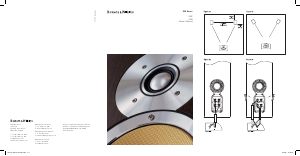
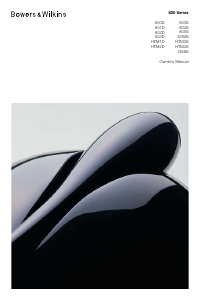
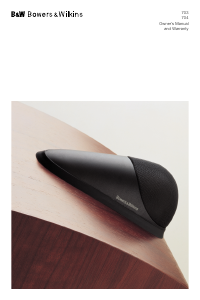
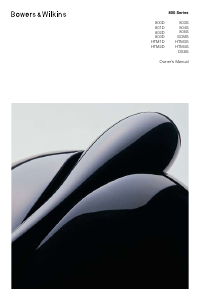
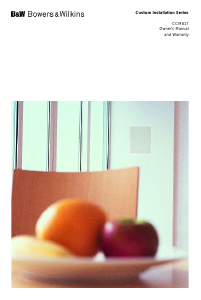


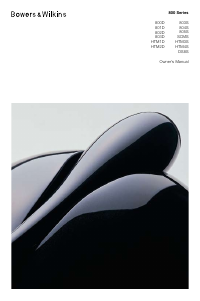
Присоединиться к беседе по данному изделию
Здесь вы можете поделиться тем, что думаете о Bowers and Wilkins Signature SCM Динамики. Если у вас есть вопросы, сначала внимательно прочтите инструкцию. Запросить руководство можно с помощью контактной формы.